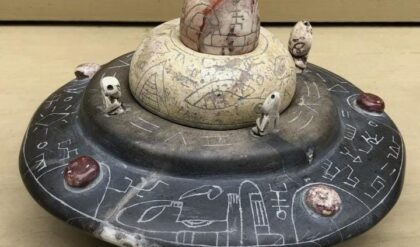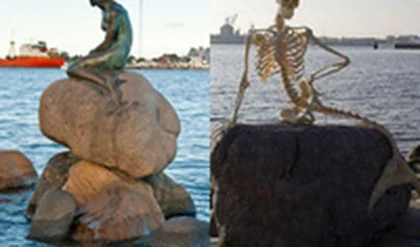Crédito obligatorio: Foto de Xinhua/REX/Shutterstock (8501414b)Un trabajador egipcio se prepara para levantar partes de una estatua en el sitio de un nuevo descubrimiento arqueológico en el distrito de Souq Al-Khamis en el área de Al-MatareyaEstatuas antiguas descubiertas, El Cairo, Egipto – 09 de marzo de 2017Según el Ministerio de Antigüedades, dos estatuas reales de la XIX dinastía fueron encontradas en partes en las cercanías del templo del Rey Ramsés II en antiguos templos del sol de Heliópolis (Oun) por una misión arqueológica germano-egipcia.
Ramsés II, el tercer faraón de la dinastía XIX de Egipto, fue uno de los gobernantes más poderosos y célebres de la historia del antiguo Egipto. Dirigió varias expediciones militares y expandió el Imperio egipcio para extenderse desde Siria en el este hasta Nubia en el sur. Sus sucesores se refirieron a él como el “Gran Ancestro”. En marzo de 2017, una expedición arqueológica conjunta egipcio-alemana encontró una estatua de 26 pies sumergida en agua subterránea en un barrio pobre de El Cairo. la estatua fue descubierta cerca de las ruinas del templo de Ramsés II en la antigua ciudad de Heliópolis, que se encuentra en la parte oriental de la actual El Cairo. el Ministerio de Antigüedades elogió el descubrimiento como uno de los hallazgos más importantes de la historia, y los expertos creen que la estatua probablemente representa a Ramsés II.
The head of the statue was pulled out of the water by a massive forklift in the presence of archaeologists, officials, local residents, and members of the news media. The joint expedition also found the upper part of a life-sized limestone statue of Pharaoh Seti II, Ramses II’s grandson, which is 31 inches long.
The sun temple in Heliopolis was founded by Ramses II, lending support to the likelihood that the statue is of him. The temple was one of the largest in Egypt, almost double the size of Luxor’s Karnak, but was destroyed in Greco-Roman times. Stones from the site were looted and used for building as Cairo developed, and many of its obelisks were moved to Alexandria or to Europe.
Dr. Salima Ikram, an archaeologist and professor of Egyptology at the American University in Cairo, described the discovery as “spectacular, the things are astonishing.” She added that the ongoing work at the site is “crucially important because it is basically rescue archaeology of one of the most important religious places in ancient Egyptian history.”
Experts will now attempt to extract the remaining pieces of both statues before restoring them. If they are successful and the colossus is proven to depict Ramses II, it will be moved to the entrance of the Grand Egyptian Museum, set to open in 2018. The discovery was made in the working-class area of Matariya, among unfinished buildings and mud roads.
In conclusion, the discovery of the 26-foot statue in Cairo is a significant find for archaeologists and for the history of ancient Egypt. If the statue is indeed of Ramses II, it will provide valuable insight into the life and reign of one of Egypt’s most powerful and celebrated rulers. The ongoing excavation and restoration work at the site is a testament to the importance of preserving the cultural heritage of the past for future generations.






